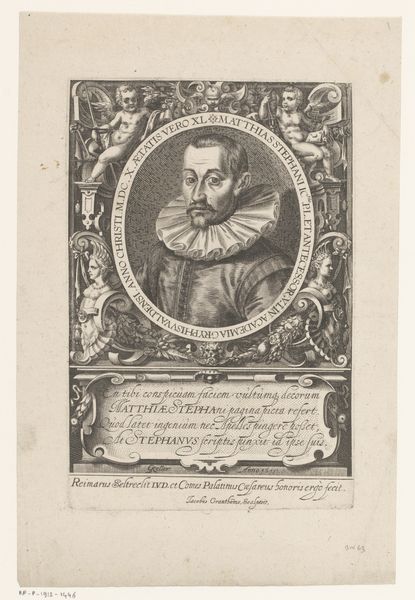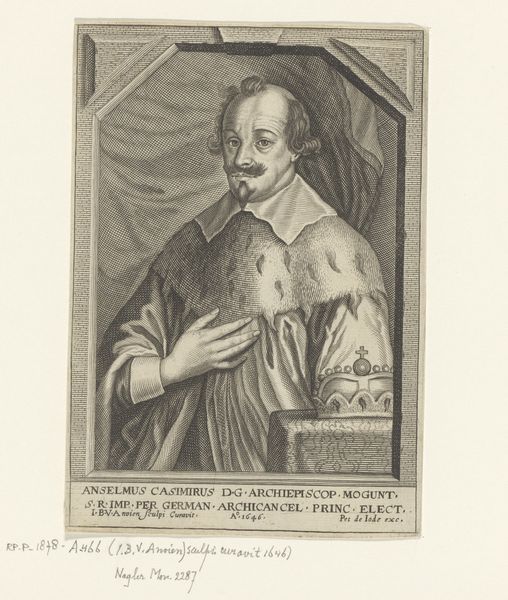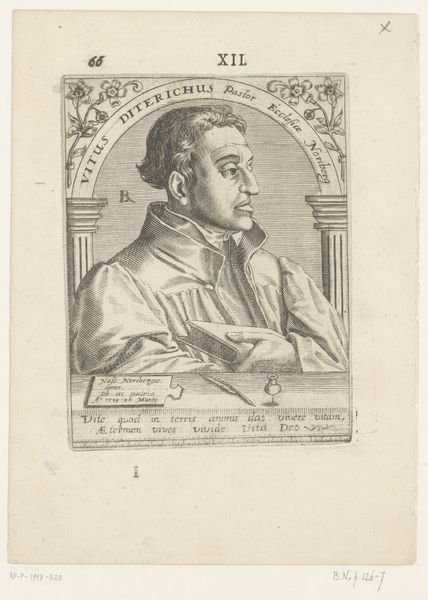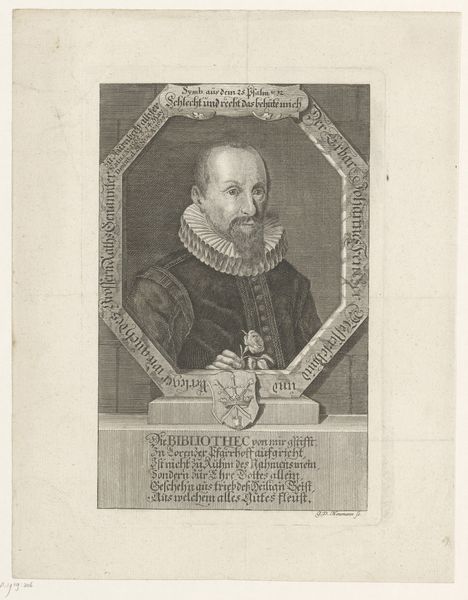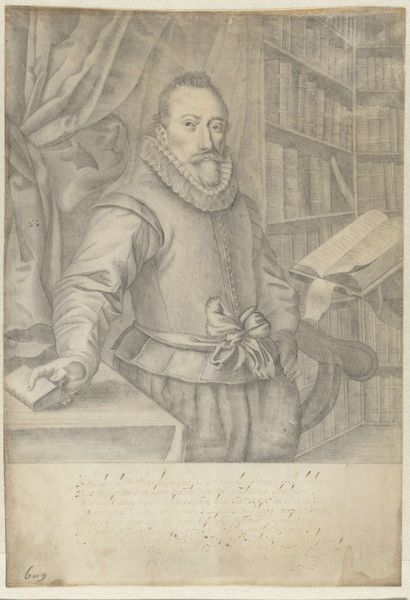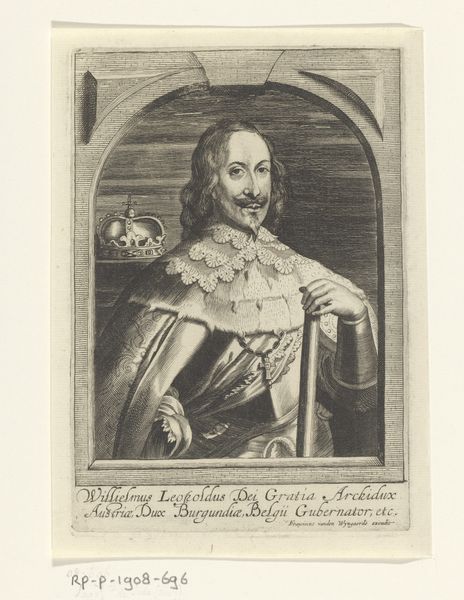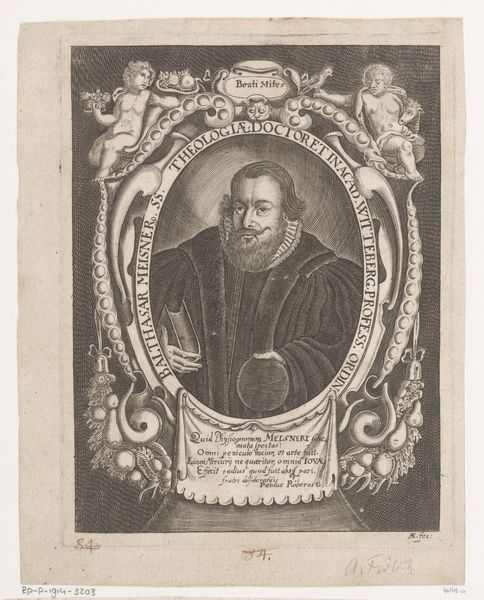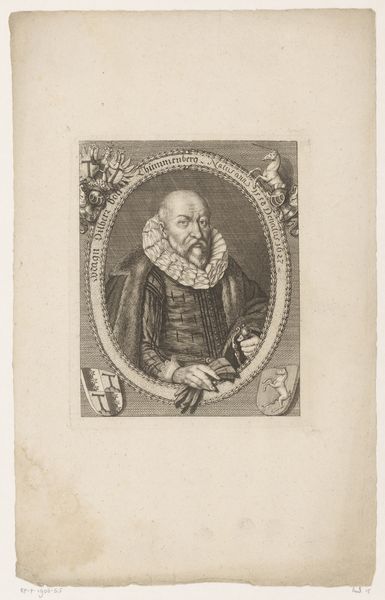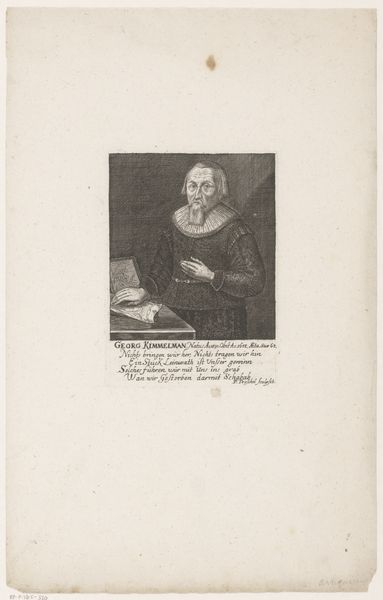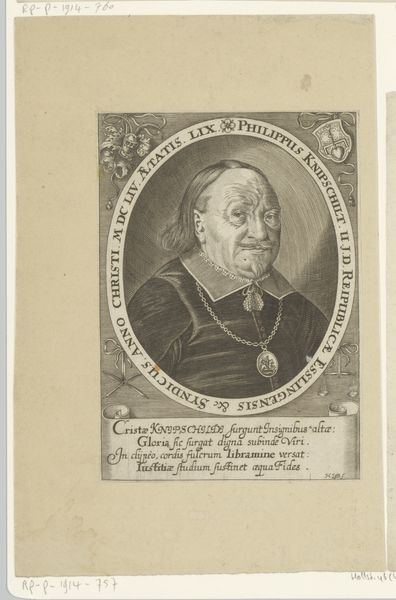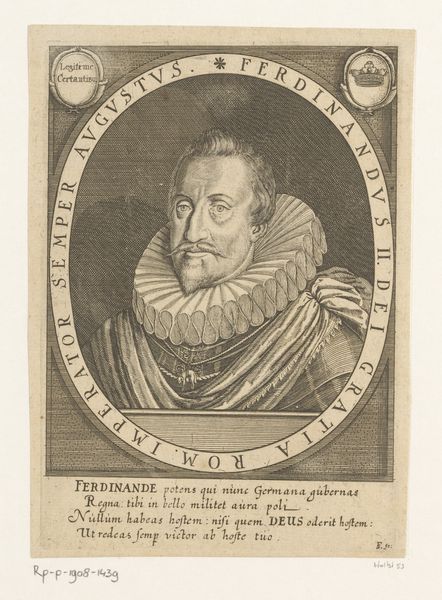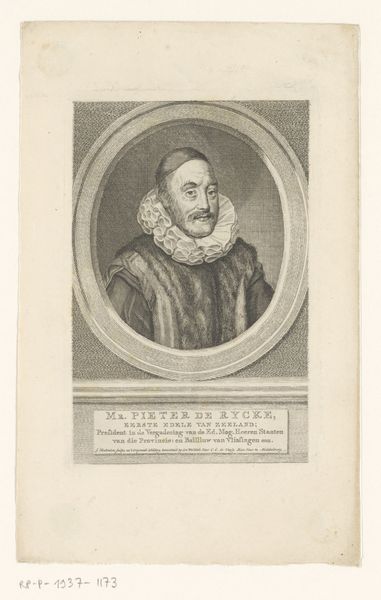
print, engraving
#
portrait
#
baroque
# print
#
academic-art
#
engraving
Dimensions: height 167 mm, width 123 mm
Copyright: Rijks Museum: Open Domain
Editor: Here we have a print, "Portret van Philip Christoph von Sötern," created in 1646 by J.B. van Anvien. The engraving captures the sitter’s stern expression so vividly. What strikes me is the framing around the portrait. It feels like more than just a simple border, almost a stage for the man depicted. What can you tell me about the role of portraiture like this within its historical context? Curator: This portrait, beyond being a likeness, functions as a statement of power and legitimacy within the socio-political landscape of the time. Note the inclusion of the crown, subtly placed, but undoubtedly present. Consider the role the subject played as Archbishop and Prince-elector in a fragmented Holy Roman Empire. Such a role came with political and often military responsibilities, and imagery like this became essential. The visual presentation of authority mattered immensely. Who do you think would have commissioned or consumed images like this, and why? Editor: Well, if he was a prince and archbishop, I imagine these images were probably commissioned by people connected to his court, other powerful religious figures maybe, to show their loyalty and cement political relationships? Curator: Precisely. The production and dissemination of these portraits, often through prints like this engraving, served to circulate and reinforce his authority throughout his sphere of influence. This imagery was very carefully controlled, serving as visual propaganda, asserting his position within the complex power dynamics of the era. The "stage," as you astutely called it, becomes a platform for projecting that image of power. Consider also how these portraits could then influence public opinion. Editor: So, it’s not just about accurately representing the individual, but constructing and broadcasting a very specific message? I’ll definitely think about portraiture differently now! Curator: Exactly. It is about controlling and shaping how the sitter and their associated ideologies and values are perceived and received. Hopefully this piece can remind us of that in a broader way.
Comments
No comments
Be the first to comment and join the conversation on the ultimate creative platform.
